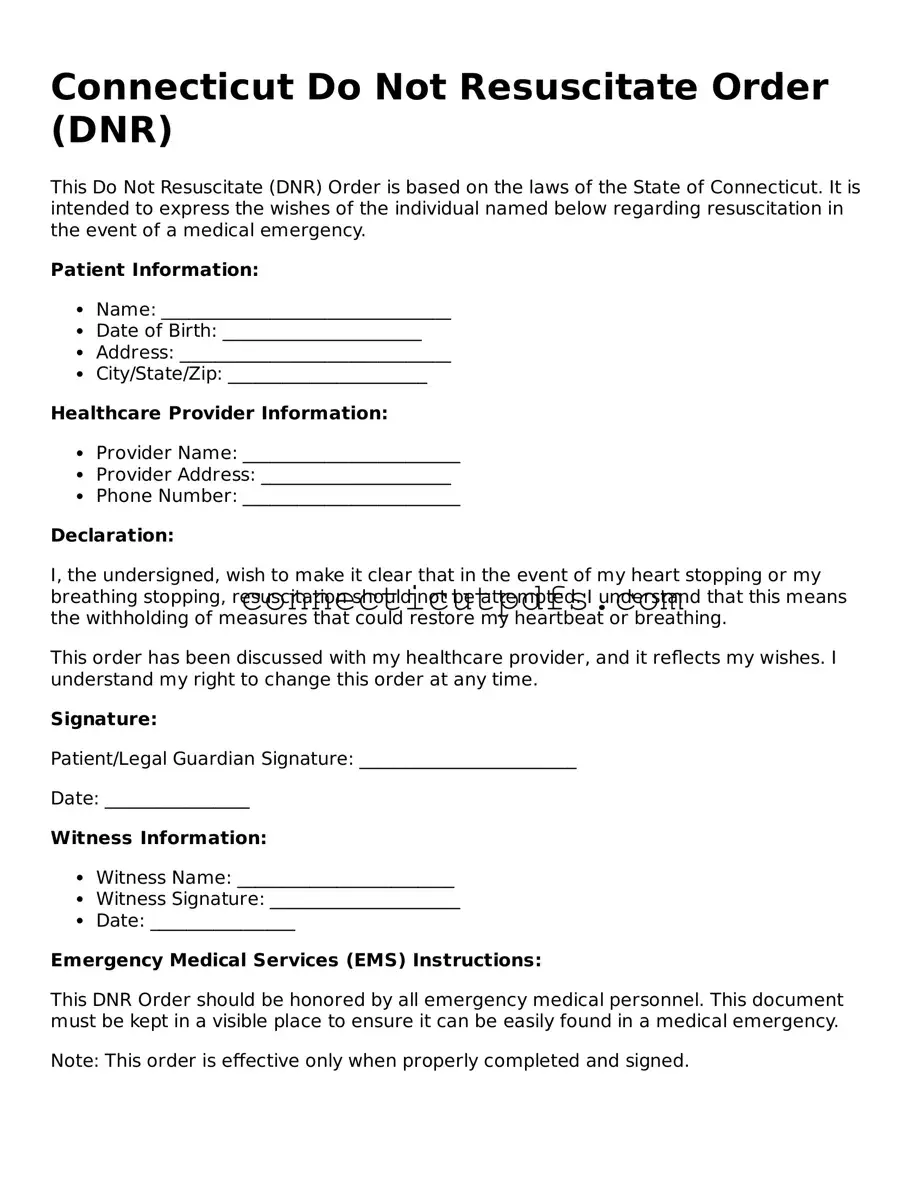What is a Do Not Resuscitate (DNR) Order in Connecticut?
A Do Not Resuscitate Order (DNR) in Connecticut is a legal document that allows a person to refuse certain life-saving medical interventions, specifically cardiopulmonary resuscitation (CPR), in the event of cardiac arrest or respiratory failure. This order is intended for individuals who wish to avoid aggressive resuscitation efforts when they are nearing the end of life or have a terminal illness.
Who can create a DNR Order in Connecticut?
In Connecticut, any adult who is capable of making their own healthcare decisions can create a DNR Order. This includes individuals with a terminal illness or those who are seriously ill. If the individual is unable to make decisions, a legally authorized representative, such as a healthcare proxy or family member, may be able to create a DNR Order on their behalf.
How is a DNR Order documented in Connecticut?
A DNR Order must be documented using a specific form provided by the state of Connecticut. This form must be completed and signed by a physician, who confirms that the individual understands the implications of the order. Once signed, the DNR Order should be placed in a prominent location, such as on the refrigerator or with the individual’s medical records, to ensure it is easily accessible in an emergency.
Can a DNR Order be revoked?
Yes, a DNR Order can be revoked at any time by the individual who created it. This can be done verbally or in writing. If an individual decides to revoke their DNR Order, it is important to inform healthcare providers and ensure that the new wishes are documented appropriately.
What should I do if I find a DNR Order during an emergency?
If you come across a DNR Order during an emergency, it is crucial to respect the wishes outlined in the document. Emergency medical personnel are trained to recognize and honor DNR Orders. Ensure that the order is valid and signed by a physician to avoid any confusion during a medical emergency.
Where can I obtain a DNR Order form in Connecticut?
You can obtain a DNR Order form from various sources, including hospitals, healthcare providers, and the Connecticut Department of Public Health website. It is advisable to consult with a healthcare professional to ensure that the form is filled out correctly and meets all legal requirements.
